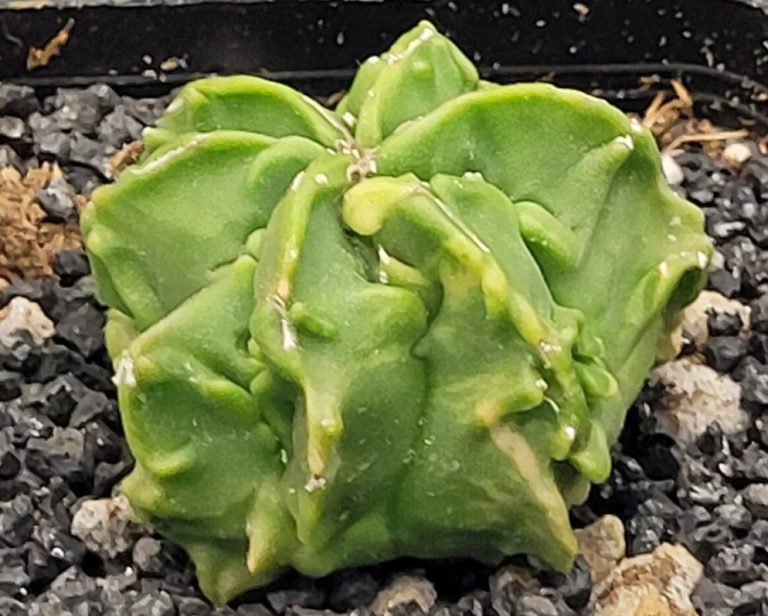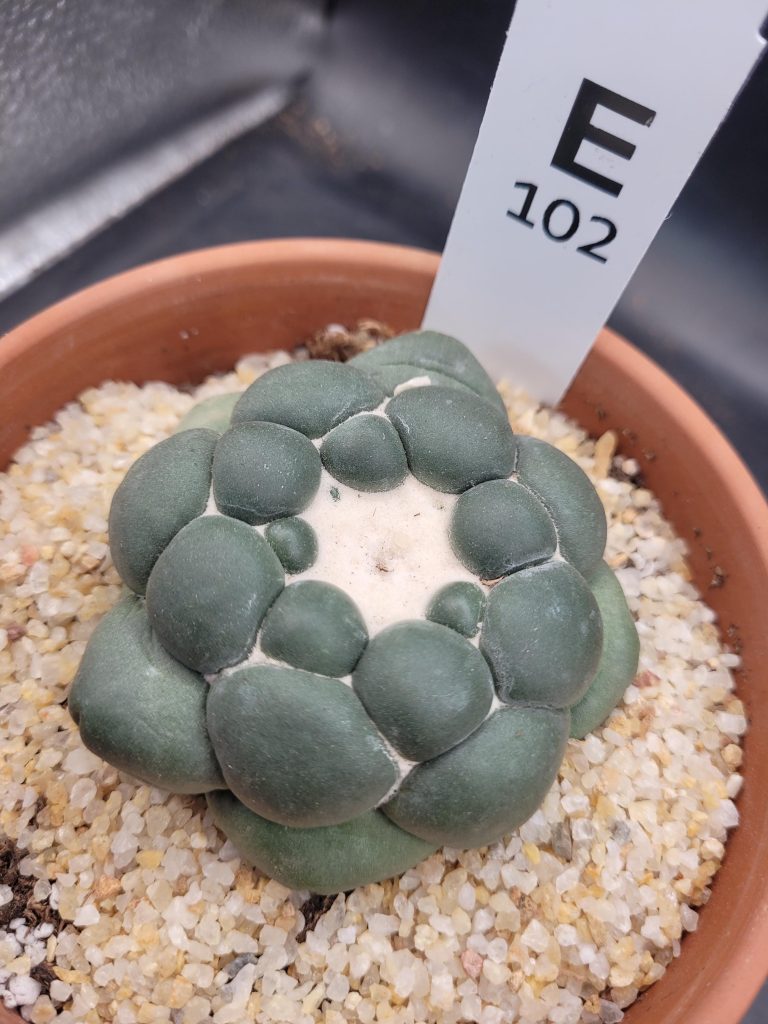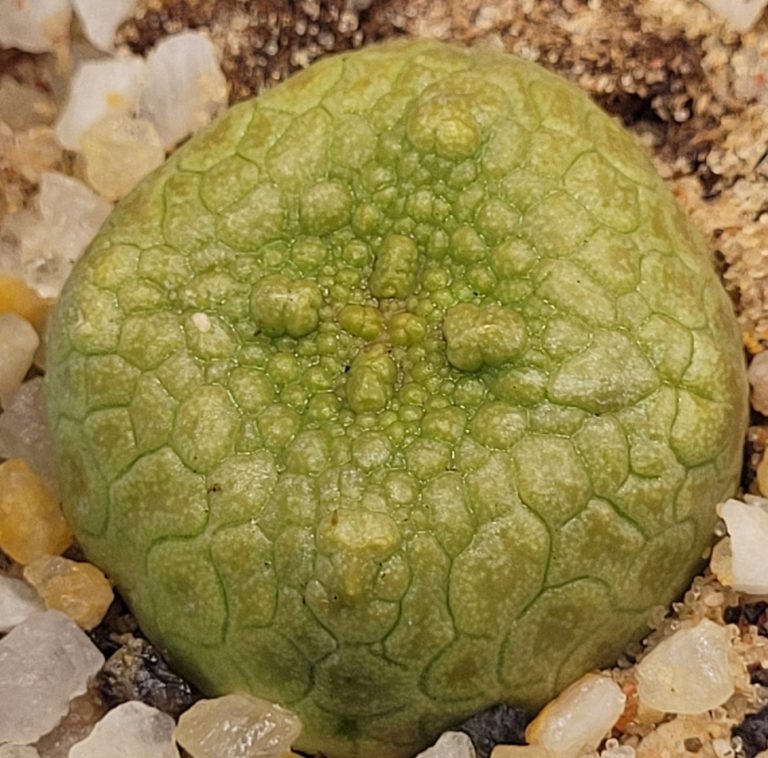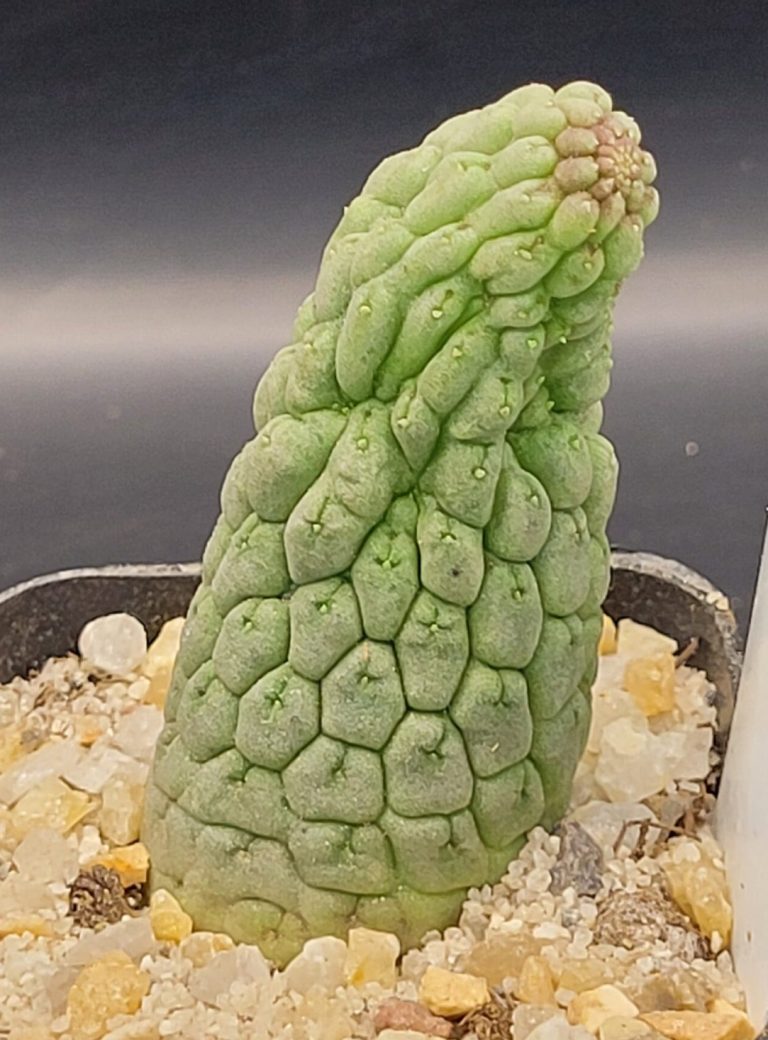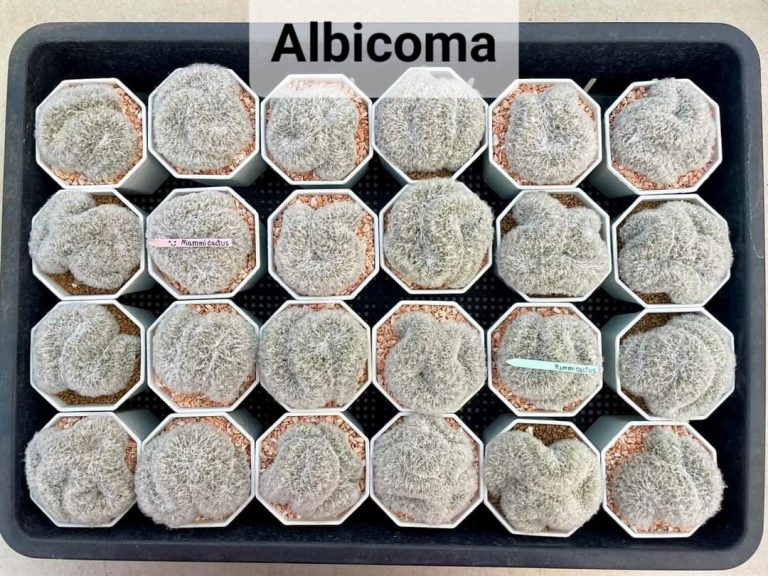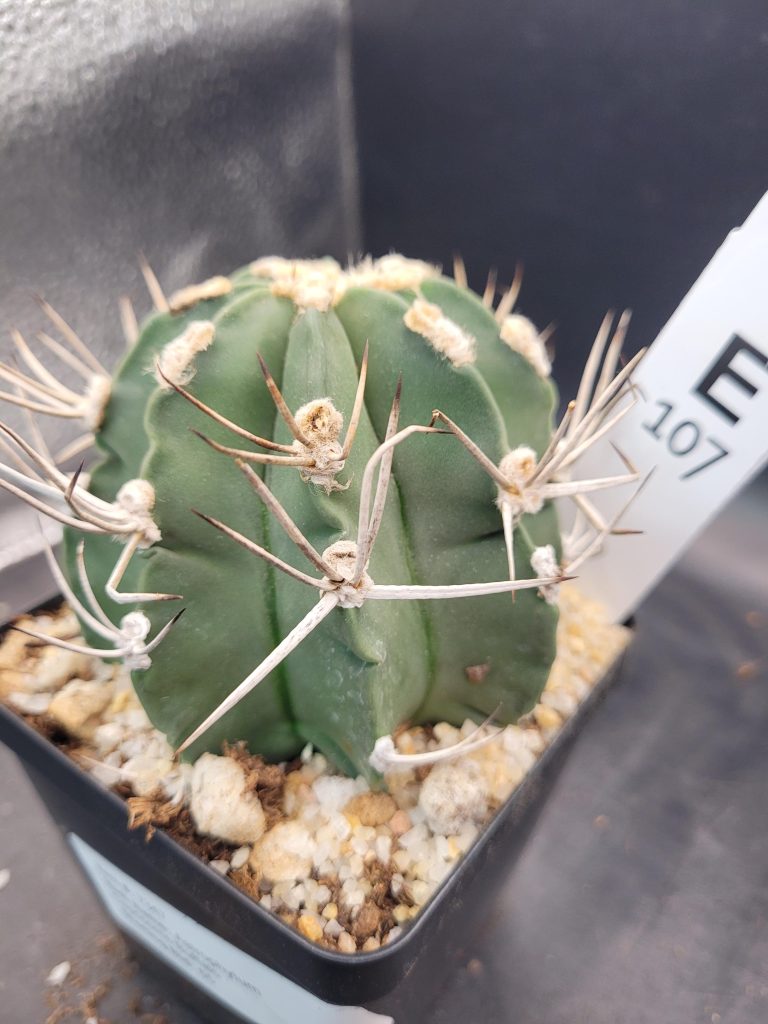If you’re searching for a cactus that’s not only rare but also boasts an extraordinary, almost otherworldly look, the Ariocarpus Fissuratus ‘Godzilla’ might just be your perfect match. Known for its thick, contorted tubercles that give it a rugged, monster-like silhouette, this stunning succulent is a true showstopper in any collection. Despite its formidable appearance, it follows standard cactus care requirements—making it surprisingly approachable for dedicated enthusiasts. In this blog post, we’ll explore the key characteristics that set this unique cactus apart and how to keep it healthy and thriving.
Description: Why “Godzilla”?
- Craggy Tubercles: The ‘Godzilla’ variant of fissuratus is famous for its rough, lumpy tubercles that can resemble miniature mountain ranges or jagged peaks—far removed from the smooth, low-profile look of other Ariocarpus varieties.
- Subtle Coloration: Its muted, grayish-green hue helps camouflage it in its native habitat. Up close, you’ll notice fine textures and patterns that make this cactus a mini masterpiece.
- Slow Growth & High Value: Like many Ariocarpus cacti, ‘Godzilla’ grows slowly, which only adds to its desirability among collectors. Patience is key, but the reward is a distinctive living sculpture unlike any other.
- Beautiful Blooms (If You’re Patient!): Under the right conditions, mature specimens may reward you with showy pink or white blossoms—a surprising pop of color on its rugged surface.
Care Guide
1. Light Requirements
- Bright, Indirect Light: Place your ‘Godzilla’ cactus where it can receive plenty of filtered sunlight, especially in the morning or late afternoon. Gentle direct sun can be helpful, but protect it from harsh midday rays that may scorch the tubercles.
2. Watering Schedule
- Sparingly & Infrequently: Ariocarpus species are desert-dwellers. During the growing season (spring and summer), water only when the soil has completely dried out—usually every 2–3 weeks. In fall and winter, reduce watering to once a month or stop altogether, letting the cactus rest.
- Avoid Overwatering: Root rot is the most common issue. A thorough soak followed by complete drying of the soil is best.
3. Soil & Potting
- Well-Draining Mix: A specialized cactus or succulent blend with perlite, pumice, or coarse sand is essential. This ensures quick drainage and aeration around the roots.
- Choose a Proper Container: Terra cotta or clay pots help wick away excess moisture, which is ideal for slow-growing, rot-prone cacti. Ensure the pot has a drainage hole.
4. Temperature & Climate
- Warm & Dry: This cactus thrives in temperatures between 65°F and 85°F (18°C to 29°C). Protect it from frosty conditions and excess moisture, especially if you live in a humid region.
- Ventilation: Adequate airflow reduces the chance of fungal issues on the cactus’s rough surface.
5. Fertilizing
- Light Feeding: During spring and summer, apply a diluted, balanced cactus fertilizer once a month to support healthy growth. Cease fertilizing in fall and winter when the plant naturally slows down.
6. Repotting & Handling
- Minimal Disturbance: Because it grows slowly, you won’t need to repot often—every 2–3 years or if it becomes root-bound. Be gentle with its tubercles; they’re more delicate than they appear.
- Avoid Damaging Roots: Carefully remove old soil from the roots and place the cactus in fresh, well-draining mix. Wait about a week before watering to allow any root injuries to heal.
7. Bloom Encouragement
- Patience & Consistency: These cacti take their time. Provide stable conditions (light, temperature, and watering) plus minimal stress, and an older ‘Godzilla’ may reward you with showy blooms in late summer or early fall.
Final Thoughts
Ariocarpus Fissuratus ‘Godzilla’ offers a dramatic twist on the usual cactus aesthetic with its craggy, monstrous silhouette and stone-like texture. While it can be a slow grower that tests your patience, its low-maintenance needs make it a great choice for collectors seeking something truly distinctive. With careful watering, proper lighting, and a suitable substrate, you can enjoy the fascination of this living desert sculpture for many years to come. If you’re up for a slow but fulfilling journey, the “Godzilla” variant is sure to be an unforgettable centerpiece in your succulent or cactus display!

